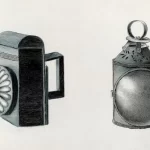Towards a Global Patent Protection – Unified Patent
- May 29, 2024
- By Sarita Thomas
- Read 3 minutes
The dream of a singular, worldwide patent system remains just that—a dream. There is no such thing as a worldwide patent. Patents are filed for protection of rights with individual countries. There are approaches though that allow to reserve the possibility of filing and obtaining a patent across multiple countries, but in true sense there is no way to file a worldwide patent. Even if the invention is a breakthrough technology, obtaining patents for it globally by filing in individual countries is expensive and almost cost prohibitive.
The good news is that recent developments in international patent frameworks are significantly shaping the way patent rights are understood and this opens an opportunity for worldwide patent protection. Understanding these shifts is important for technology leaders and innovators seeking to protect IP rights in several countries but cannot do so because of the complexities and costs involved in such filings.
The Paris Convention and Patent Cooperation Treaty
The Paris Convention for the Protection of Industrial Property that was adopted in 1883 has long governed the international patent law, allowing innovators to secure a priority date in their home country that is recognized by other signatory countries. This right of priority is critical, as it protects the inventor’s filing date across 180 countries (that are signatories of the Paris Convention), providing a year to decide where else to file. This is one of the most widely adopted treaties in the world.
The Patent Cooperation Treaty (PCT) is another procedural path that can be used to protect rights internationally. Inventors can file a single international application under the PCT to delay deciding where to seek patent protection for up to 30 months from the earliest filing date. This means an applicant gets a 30 months window to file a patent in different countries internationally. This window is invaluable for assessing the market viability and technical aspects of the innovation.
Despite these frameworks, the quest for worldwide patent protection is fraught with challenges, notably the high costs associated with filing and maintaining patents across multiple jurisdictions. Each country has its own legal nuances, making the process not only expensive but also complex.
While the PCT and the Paris Convention simplify the initial phases of international patent filing, entering the national phase—where the patent is scrutinized according to local laws and regulations—remains a critical step to define the scope of protection as opposed to a global patent.
The Unitary Patent: A Step Closer to Worldlwide Patent Rights
After a long journey, the introduction of the Unitary Patent (UP) by the European Union marks a significant milestone in the effort to streamline the patent process across multiple jurisdictions. This will be like a pan European patent. Unlike traditional methods that require individual validation in each country, the UP allows for a single patent to be enforceable across 17 (and potentially up to 25) EU member states. This has made it much more cost effective to obtain patent protection across many countries of the European Union. This opens a path towards a more cohesive patent system within Europe, offering a cost-effective and efficient pathway for companies who are willing to protect their innovations across multiple countries of the Europe, which was otherwise difficult due to cost prohibitive reasons.
The UP is particularly beneficial for entities requiring robust patent coverage across multiple countries to protect complex innovations comprehensively. The UP enables technology firms to allocate resources more strategically by reducing administrative and financial burdens.
The Unitary Patent will be examined and administered by the European Patent Office (EPO). Applicants will file a European patent application, which will be searched and examined as per usual process. At the time of grant, applicants will have an option to choose the Unitary Patent pathway. Unitary patents will be treated as a single patent no longer requiring validation. This will save huge amount of financial and administrative resources. Unitary patents will co-exist across the Europe with domestic patents that are obtained directly in the member countries. The unitary patent will be enforceable before the Unified Patent Court (UPC).
Sarita Thomas
Latest Blogs
Blog Categories
- Intellectual Property (IP) Strategy (85)
- Intellectual Property Asset Management (IPAM) (17)
- IP Monetization (4)
- IP News (7)
- Patent Drafting (2)
- Patent Litigation (6)
- Patent Prosecution (8)
- Patenting (18)









No comment yet, add your voice below!